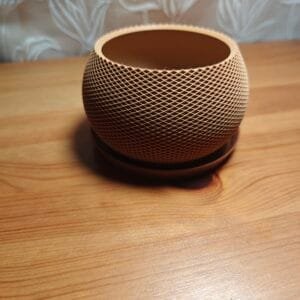Rose Window Gothic Coaster
€1.20
(LxWxH)-89x89x6.35mm-1h21m-25.78g-15%
1 in stock
Description
Gothic Rose Windows:
Rose window is often used as a generic term applied to a circular window, but is especially used for those found in Gothic cathedrals and churches. The windows are divided into segments by stone mullions and tracery. The term rose window was not used before the 17th century and comes from the English flower name rose.
The name “wheel window” is often applied to a window divided by simple spokes radiating from a central boss or opening, while the term “rose window” is reserved for those windows, sometimes of a highly complex design, which can be seen to bear similarity to a multi-petalled rose. Rose windows are also called “Catherine windows” after Saint Catherine of Alexandria, who was sentenced to be executed on a spiked breaking wheel. A circular window without tracery such as are found in many Italian churches, is referred to as an ocular window or oculus.
Rose windows are particularly characteristic of Gothic architecture and may be seen in all the major Gothic Cathedrals of Northern France. Their origins are much earlier and rose windows may be seen in various forms throughout the Medieval period. Their popularity was revived, with other medieval features, during the Gothic revival of the 19th century so that they are seen in Christian churches all over the world.
Origin
The origin of the rose window may be found in the Roman oculus. These large circular openings let in both light and air, the best known being that at the top of the dome of the Pantheon. Geometrical patterns similar to those in rose windows occur in Roman mosaics.
The German art historian Otto von Simson considered that the origin of the rose window lay in a window with the six-lobed rosettes and octagon which adorned the external wall of the Umayyad palace Khirbat al-Mafjar built in Jordan between 740 and 750 CE. This theory suggests that crusaders brought the design of this attractive window to Europe, introducing it to churches. But the decorative pattern for rose and, independently, the tracery, are very present in vestiges of the early Christian architecture, Byzantine architecture, and especially in Merovingian art, and Visigothic architecture before the Muslim conquest of Spain. But half roses are also known, as with the church of San Juan Bautista in Baños de Cerrato. The scarcity and the brittleness of the vestiges of this time does not make it possible to say that complete rose window in tracery did not exist in early Middle Ages.
In Early Christian and Byzantine architecture, there are examples of the use of circular oculi. They usually occur either around the drum of a dome, as at the Church of the Holy Sepulchre, Jerusalem, or high in the end of a gable of low-pitched Classical pediment form, as at Sant’Agnese fuori le mura, Rome, and Torcello Cathedral.
A window of the 8th century, now in Venice, and carved from a single slab, has alternating tracery-like components of two tiers of four lancets separated by three oculi. Many semicircular windows with pierced tracery exist from the 6th to the 8th century, and later in Greece.
Small circular windows such as that at S. Agnese and Torcello as well as unglazed decorative circular recesses continued to be used in churches in Italy, gaining increasing popularity in the later Romanesque period.
Symbolism
In Gothic cathedrals and churches, where a rose is often found above the West Door, the most common subject of the stained glass that it contains is the Last Judgement, which by a long tradition is depicted either in mural or glass on the western wall of the building. In such windows Christ is shown seated in the centre “light” and within the lights around him are the symbols of the four Gospel writers, Apostles, Prophets, Saints and Angels. Some windows show God’s dominion over Heaven and Earth by including Zodiacal signs and Labours of the Months.
When rose windows are used in the transept ends, then one of those windows is frequently dedicated to Mary as the Mother of Jesus. In modern Catholic thought, the rose window is often associated with the Virgin Mary because one of her titles, referred to by St Bernard of Clairvaux, is the “Mystical Rose”. However, the specific association of Mary with the rose window is unlikely during the Medieval period, because the term “rose window” was not coined until the 17th century, a time when few such windows were being constructed. However, with the revival of the Gothic style in the 19th and 20th centuries, much stained glass that was installed in rose windows, both in new churches and as restoration in old churches, was dedicated to the Virgin Mary.
Related products
Home Decor
Home Decor


































